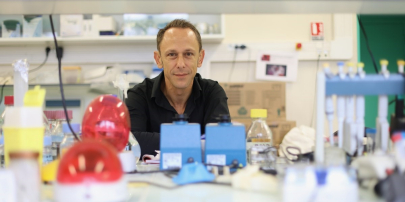Guillaume SandozChercheur CNRS
Mes recherches
I head the Biology of Ion Channels (BIC) at the institute of Biology Valrose (UMR7277 & Inserm-U1091). I am a molecular and cellular neuroscientist with a strong background in ion channel structure and function. After a PhD on the regulation of the pre-synaptic voltage-dependent calcium channels in Marseille and Grenoble, I joined the Lazdunski and Lesage Labs first as a post-doc then as a Researcher (Chargé de Recherche) at the Institute of Pharmacology in Sophia Antipolis (2004-2009), where I developed a strong interest in a new channel family: the two-Pore-Domain Potassium (K2P) channels. They serves as a hub for the regulation of neuroexcitability. In 2009, I joined the Isacoff lab in Berkeley as a Fulbright Visiting Scholar. In Berkeley, I worked on several aspect of the K2P pharmacology and notably determined the molecular mechanisms underlying activation K2P channels by GABAB receptors to generate the slow inhibitory post-synaptic potential. Stronger of my new experiences, in 2012, I applied and obtained the ATIP-Avenir grant. The ATIP-Avenir allowed me to start, in 2013, a new team called “Biology of Ion Channels” (BIC) at the Institut of Biology Valrose (iBV) in Nice, France. Over the 5 years of the ATIP-Avenir, the team was able to determine the physiological and pathophysiological functions of the K2P in several paradigms by notably demonstrating their role in addiction (PNAS, 2014) and in Pain (Cell, 2014). More recently addressed their function in Migraine and described a new mechanism of transmission of inherited disease explaining the implication of K2P in migraine (PNAS, 2016, Neuron, 2019). After, the ATIP-Avenir, I obtained the “équipe FRM” grant allowing me to well stabilize the team and to continue to work in a great environment.
Mon projet ATIP-Avenir
Optogenetic Study of K2P Potassium Channels
Ion channels generate the electrical signals with which the nervous system senses the world, processes information, creates memories and controls behavior. One of the most diverse and important families of ion channels, the Two-Pore-Domain Potassium (K2P) channels, serves as a hub for the generation and regulation of the negative resting membrane potential and neuronal excitability. K2P channels have been shown to be notably involved in mood regulation and migraine. To address the role of the K2P channels, notably TREK1, I developed a TREK1 channel that is controlled by light, both in-vitro (TREKlight) and in-vivo (StarTREK mouse model). Regarding our StarTREK model, these mice have the advantage that their TREK channels can be instantaneously and reversibly blocked with light with high temporal and spatial precision. Using these tools in combination with single molecule fluorescence pull down assays (SiMPull)—we have been able to demonstrate the implication of this channel family in addiction and decipher the molecular mechanism linking K2P channel, Alternative Translation Inintiation and Migraine and a new mechanism of transmission of inherited disease that I called fsATI (frameshift mutation induced alternative translation initiation). Our current project aims to address K2P channel’s physiological (neuroexcitability, plasticity, 5HT secretion) and pathological (depression, migraine and ischemia) functions and to determine which channels subtypes are, along with finding new drug targets, involved in these aforementioned processes.
